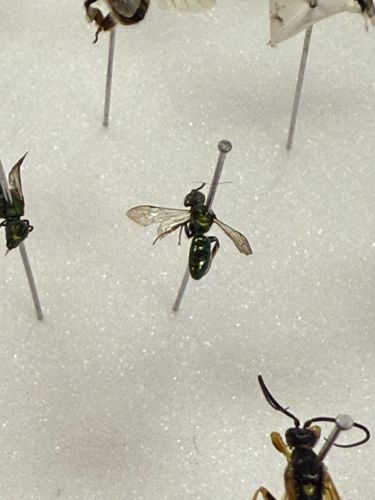Cuckoo Wasp
Scientific Name: Chrysididae
Order & Family: Hymenoptera, Chrysididae
Size: Typically 3-15 mm

Natural Habitat
Globally distributed, often found in sunny, dry areas, especially where their host insects are present, such as sandy areas, open woodlands, and gardens.
Diet & Feeding
Adults feed on nectar, pollen, or honeydew. Larvae are typically parasitoids or cleptoparasites of other insects, such as bees and wasps.
Behavior Patterns
Cuckoo wasps are known for their brilliant metallic coloration (often blue, green, or red). They are mostly solitary. A key behavior is cleptoparasitism or parasitism, where the female lays her eggs in the nests of other bees or wasps, and the cuckoo wasp larva then consumes the host's egg or larva, or the food stores intended for the host's offspring.
Risks & Benefits
Generally considered beneficial insects as they parasitize other insects, which can help control pest populations. They are not aggressive and rarely sting humans, and their sting is usually mild. Their bright coloration can act as a warning to predators.
Identified on: 9/19/2025